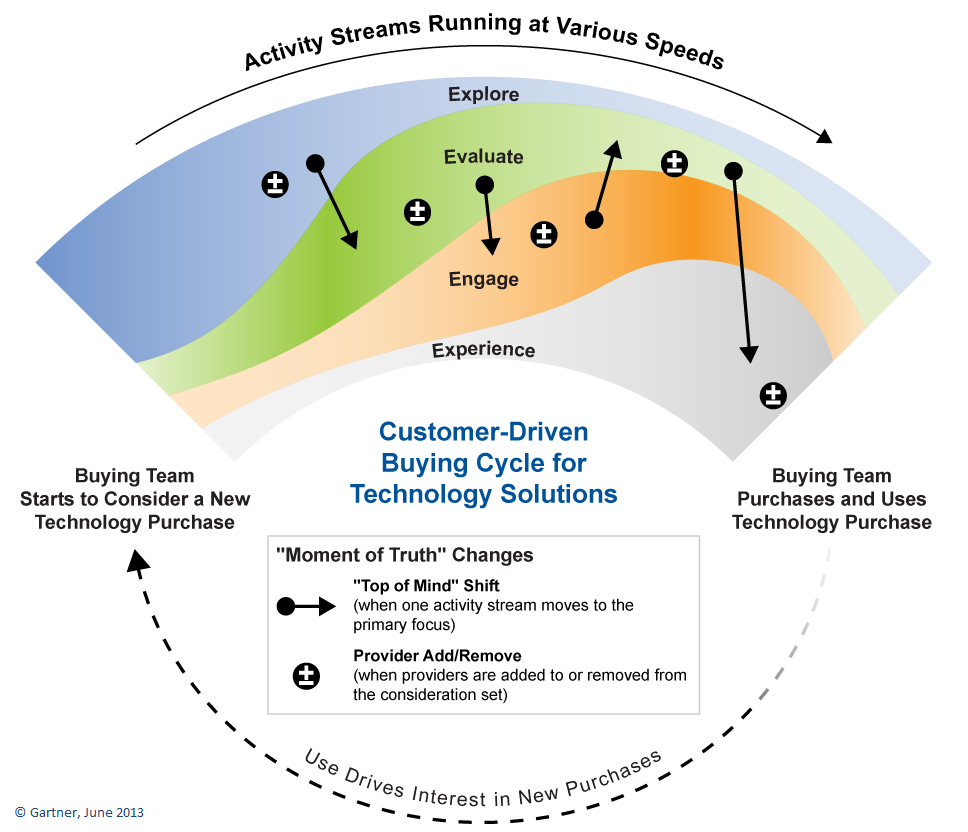Customers struggle with buying. There’s a huge amount of data indicating the majority of customer buying processes end in no decision made.
There a number of reasons this occurs, shift is priorities, lack or urgency/attention, fear of change, costs, and so on. One of the major reasons is customers simply struggle with the buying process itself.
When you think about it, with the exception of procurement professionals, and with the exception of things we buy frequently–for example toilet paper for the bathrooms, the buying process only happens once.
Since most of what we buy only happens once, particularly in a complex buying situation, it’s no wonder they struggle with the process and fail to make a decision. They’ve never done this buying process before! They don’t know why, what, how they should do this.
Let me be clear, it’s not that our customers haven’t bought things before, they have. They may have even bought some of the things we sell before. For example, they may be reassessing ERP, HR, Financial Systems. Possibly moving from enterprise based solutions, to cloud based solutions. They may be putting in a new manufacturing process, or introducing a new product. They’ve done all these things in the past and have purchased in the past.
But each buying situation is new and unique. It happens once and is never (well OK, never may be a strong word) happens again.
Buying occurs at a point in time. It happens as a result of a specific situation. A unique group of people, all with differing experiences, priorities, agendas, is the buying team for this purchase. What they are trying to achieve and why they are doing it is unique to this situation and this point in time. Even if the same people are involved in another situation at a later date, their agendas and priorities have changed, as has the situation.
On top of this, the possible solutions change. Perhaps we made a decision on a certain product a couple of years ago. That product has now become outdated (if you are in technology, it’s obsolete already). The potential solutions that might be selected for something we are trying to do today, are likely to be very different than when we addressed the similar issue a number of years ago.
It’s no wonder our customers struggle, they never done this before! It’s their first time to address this specific “Buying Process/Situation.”
Yes, there are some things that may be similar to past buying decisions. We may have addressed similar problems or opportunities. We know the general steps we have to go through—define the problem, establish goals/outcomes, identify needs/requirements, evaluate alternatives, and so forth.
But each buying situation is unique. Our customers haven’t faced this situation before and won’t face it again. As a result, why should we or they assume they know how to buy in addressing this opportunity?
What’s this mean for us, as sellers?
Well, each selling situation is unique. It’s different than the past situation we dealt with with these customers. It’s different than the situations we are working with other customers.
So we have to pay attention. We have to probe, we have to understand. We can’t make assumptions–just because we were involved with this customer in a similar thing last year doesn’t mean things are the same—they aren’t, by definition. We can’t be on autopilot, we can’t read from the same tired script or do the same irrelevant demo.
We have to understand the specific dynamics of what the customer is trying to do: Why now? What’s different about this situation? What is the customer is trying to achieve, why is this situation important to them now? Who is involved, why, what are their attitudes, motivations, priorities, agendas, goals? How do the relate to each other in the buying team, now? What will they have to do to approve and implement this decision.
There may be similarities with past situations, and we can leverage our experience and expertise to help accelerate our ability to understand this buying process the customer is going through right now. But we have to recognize and respond to the differences.
We also have the opportunity to be very helpful to the customer in their buying process.
Think for a moment. If you sell CRM systems, how many times in their careers has the customer made a CRM selection. If they are doing it right, probably only a couple of times. (If they are doing it wrong and constantly changing CRM, then you have a whole set of even more difficult challenges). In complex buying/selling, our customers don’t buy these solutions every day. Sometimes years may pass between these major decisions. So they have no experience base to draw from for this unique buying process.
But we face these situations every day. While each situation is unique and different, we have experience of working with dozens to hundreds of customers who are going through similar processes every day. We have a much richer base of experience in working with them, and in understanding what they think is important and how they buy. We have a tremendous opportunity to help our customers learn from other customers or learn from us in helping them shape their buying process for this buying decision.
Each buying decision is unique. It happens once. Our customers struggle because they have never gone through this before and their similar experiences may be dated. We see these every day, and while each buying process is unique, we can help our customers learn how others have done the same thing, and helping them discover how they should buy for this situation.
Are you taking advantage of this? Our you collaborating with your customer to help them discover and define how they will buy today?

Leave a Reply